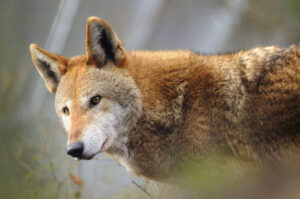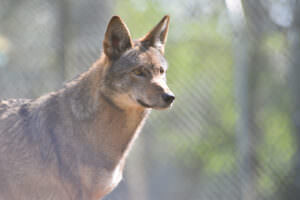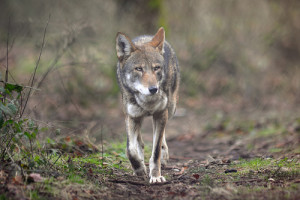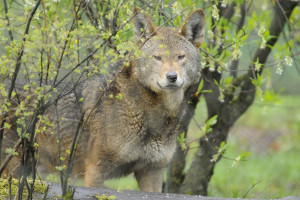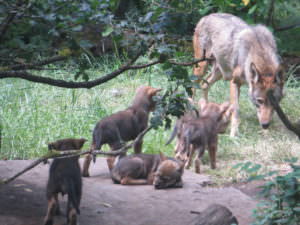The American Red Wolf
Overview
The American Red wolf (Canis rufus) is one of two wolf species indigenous to North America. The original American Red wolf range extended throughout the southeast, up and down the eastern seaboard, and as far west as Texas, Missouri, and Arkansas. Aggressive predator control and habitat loss reduced the wild American Red wolf population to a mere 14 wolves by the late 1970s. However, the most serious threat to the existence of American Red wolves was hybridizing with coyotes. As gray wolves were eradicated, coyotes experienced a population explosion and radically expanded their range east. Simultaneously, as the American Red wolf population fell, coyotes and American Red wolves began to interbreed. By the late 1960’s, there were very few true American Red wolves remaining. The Endangered Species Act prevented the complete eradication of the American Red wolf, and an American Red Wolf Species Survival Plan (SSP) program was developed by the U.S. Fish and Wildlife Service (USFWS) to manage and oversee the recovery of this endangered species through captive breeding, housing, and releasing into suitable habitat. In 2023, the SSP program transitioned into a Saving Animals From Extinction (SAFE) program.
Of the 400 animals captured between 1973 and 1980 to start the recovery program, 43 were sent to the first breeding facility, Point Defiance Zoo in Tacoma, Washington. Only 14 of those 43 were eventually determined to be pure American Red wolves (rather than coyote hybrids) and were used to establish the population of American Red wolves that exists today. The first captive-born American Red wolves were born in 1977, and the first American Red wolf reintroduction took place in 1987.
Unfortunately, as the reintroduced American Red wolves successfully expanded their population and coyotes continued to move east, it became apparent that American Red wolves and coyotes were once again hybridizing. Innovative adaptive management techniques have been created and implemented to mitigate hybridization and to ensure the integrity of the American Red wolf species… but today, only 19 to 21 American Red wolves are estimated to roam their native habitat in the Alligator River National Wildlife Refuge and the Pocosin Lakes National Wildlife Refuge in North Carolina. This is the world’s only wild population of American Red wolves.
Wolf Haven’s Role
In 2003, Wolf Haven was approved to participate in the American Red Wolf SSP/SAFE program as a breeding facility. Wolf Haven follows strict guidelines for the care and maintenance of these animals — interactions with humans are kept to a minimum and observations are done by remote camera. There are currently eight American Red wolves living at Wolf Haven, and because of the nature of our sanctuary, the wolves raised here are prime candidates for release into the wild.
Since 2005, five litters of American Red wolf pups have been born at Wolf Haven and two American Red wolves born at our sanctuary have been released into the wild. The most recent litter was born in the spring of 2023. Our participation in the American Red wolf recovery program provides us with the opportunity to teach about the historical and current range of the American Red wolf; support conservation efforts; and sustain a surplus population of animals who are behaviorally and genetically appropriate for restoring the species in the wild if it were to go extinct. The current population under professional care is 238 American Red wolves among 47 facilities in the United States.
AMERICAN RED WOLF FACTS
Physical Appearance: cinnamon-red fur with black fur down the back and white fur on the jawline.
Size and Weight: smaller than a gray wolf, with a head and body length of 3-4 feet and a weight of 50-70lbs
Birth: mating occurs January-April and the gestation period is 63 days. There can only be one litter per year.
Diet: white tail deer and smaller mammals such as raccoons, rabbits, and nutria.
Pack: usually consists of a breeding pair and more than one generation of offspring. Pack size is typically smaller than gray wolves because they are not taking down large prey like elk and bison.
